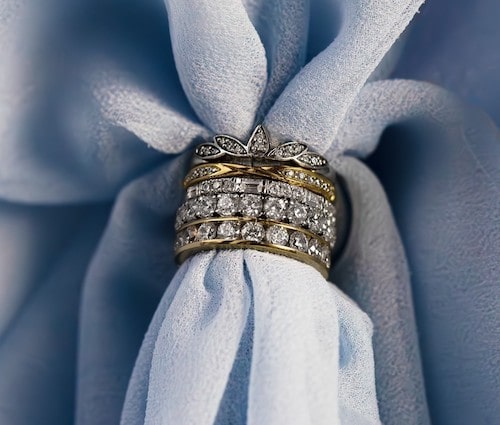Ultimate Guide to Pear Cut Engagement Rings
Pears are timeless and elegant - and we’re not just talking about the fruit. Pear-shaped diamonds ooze femininity with their voluptuous elongated shape, pointed tip and rounded end. They’re one of the most popular diamond cuts which has stood the test of time, and looking at our pear cut diamond engagement ring collection, with vintage to modern minimalistic styles it’s not hard to see why.
If you’re planning to propose with a pear-shaped diamond engagement ring, you might be wondering where to begin your search or questioning the differences between all the different ring styles available. A pear is a pear - right? Well, not quite. Choosing the right pear-shaped engagement ring for your proposal takes careful consideration - and that’s where we come in. Our ultimate guide will explain everything you need to know when choosing the perfect pear cut engagement ring that you will cherish for a lifetime.
What is a pear-cut diamond?
A pear-cut diamond is exactly what it sounds like – a diamond shaped like a pear or shimmering teardrop. A pear cut features a pointed edge at the top of the diamond and rounded end on the bottom. This cut blends the best of both worlds: the brilliance of a round-cut diamond and the elegance of an elongated pointed shape such as a marquise cut diamond. The pear cut is a well known elongated shape which makes the fingers appear slimmer and longer, This is another advantage to choosing this beautiful shape.
If you’re looking for an engagement ring that oozes sophistication, elegance and lots of sparkle then a pear-cut engagement ring is a must-pick!
Choosing the ratio for your pear-cut diamond ring
The ratio of a pear-cut diamond is calculated by the diamond's full length divided by its width at the widest point of the diamond. The ratio of the diamond impacts its overall appearance and value, this is why you hear so many jewellers say no two diamonds are the same.
So, what is the perfect ratio for a pear-shaped diamond? It’s said the popular ratios purchased on the market range between 1.51 - 1.75. Ratios within this range will always have a great balance of length and width to give a beautiful, elegant pear shape that is not too short and stubby, but also not too skinny and long that you lose the voluptuous shape of the pear. However, ultimately, the ratio of the diamond you choose is up to you as other ratios can be stunning, always make sure you check the diamond in person and ask for advice from your jewellers, compare the ratio differences with the overall price of the diamond and compare which options work best for you.
Diamond Ratios
- Low ratios are 1.50 and under: creating a short and wide-shaped pear diamond.
- Ideal ratios are between 1.60-1.75: A beautifully balanced, sparkly, pear cut diamond.
- Higher ratio 1.75 and over: A longer and slender/skinny pear, with less light and sparkle.
Choosing the shape of your pear-cut diamond ring
Although the shape of a pear-cut diamond is likely to be that of a teardrop, not all pear-shaped rings are the same. The quality of the diamonds cut can result in the following defects:
- The diamond is too triangular: If the stone has a flat back or sides, it can result in the diamond lacking its signature feminine curve and sparkle, as a result, looks more triangular than a true pear shape and can affect the sparkle of the stone.
- The diamond slopes instead of curves: if the bottom of the diamond is too wide, the sides that come towards the point may slope unattractively rather than come to a nice crisp edge.
- Beware of the bow tie: While bow ties look great with a suit and waistcoat, it’s the last thing you want to see within a diamond. A bow tie effect is a dark shadow in the centre of the stone that blocks light and sparkle from the widest parts of the diamond and darkens its overall appearance. It’s named the bow tie effect as its shape resembles the shape of the well known neckwear. All elongated shapes will have a hint of a bow tie but always check the stone itself to ensure yours is not compromising the sparkle of that all important diamond and compare the prices as this changes the value of that diamond and you will see cheaper options have a more visible bow tie present.
Choosing the clarity of your pear-cut diamond
Clarity measures the purity and rarity of a diamond or precious stone based on the presence of characteristics also known as flaws or inclusions that are visibly present with x10 magnification. Inclusions are known as internal characteristics which are present inside the stone and blemishes which are present on the surface or exterior of the stone.
One of the benefits of choosing a pear-cut diamond for your engagement ring is that the cut can help to disguise inclusions better than other shapes depending on their placement. Particularly if they’re closer to the upper girdle facets and away from the center of the stone and the rounded end of the stone. It’s important to check where the inclusions are placed in your pear cut diamond and how visible they are from different angles as this will impact the light, sparkle and value of your diamond.
The clarity categories you will learn about at a jewellers are:
- I3-I1 Clarity: This category stands for Included, meaning inclusions will be present. It has three known stages I3, I2 and I1. You may find the I1 category in retailers as it is the highest grade of this category. However, you will notice a reduced sparkle and duller appearance within the stone, which can occur as the size and placement of inclusions can block the light in the stone making it appear foggy or misty. However, they're many I1 diamonds which are beautiful and at a great price point. We highly advise viewing the stone when considering buying within this category.
- S2-S1 Clarity: This stands for slightly included, meaning that inclusions are present within the diamond and they will be visible across the diamond from certain angles or from the top view of the stone to the naked eye. This is not always a bad choice of clarity as each diamond is different and the placement of the inclusions is something to take note of when choosing from this category. This is a more affordable option to choose, especially if you have a larger carat weight in mind for your diamond.
- VS2-VS1 Clarity: This stands for very slightly included which will be much harder to see with the naked eye, this is where you will need to start using a x10 magnifier or jeweller's loop to see the inclusions and their placement. This is a desirable choice for couples who want a diamond that sparkles brightly but doesn’t break the bank, as these are beautiful and yet affordable.
- VVS2, VVS1 Clarity: This stands for Very Very Slightly included. These diamonds contain minimal inclusions, which you will only be able to see on a x10 magnifier, they will be present in the diamond but are very difficult to see. Consulting your diamond certificate will come in handy to map out the diamond’s inclusions. Diamonds in this category come with a larger price tag but hold a greater value over time. The sparkle is remarkable and it is very easy to fall in love with a diamond in this higher clarity grade.
- IF - FL Clarity: If you’re looking for perfection, then here it is, the top of the clarity scale. IF stands for Internally Flawless, meaning the interior of the stone will be inclusion free, however it will have the presence of blemishes which are incredibly difficult to see and will need a x10 magnifier. Flawless means there are no inclusions present or blemishes offering the maximum brightness and sparkle in your diamond or precious stone. It is a show stopper and perfect when you want only the best for your loved one.
How much do pear cut diamonds cost?
The price of your pear-cut diamond engagement ring will depend on a number of different factors, such as the carat, cut, colour and clarity. The good news is, if you’re choosing to pop the question with a pear-shaped diamond, they are generally between 10-30% more affordable than a round cut diamond.
But why are pear-cut diamonds cheaper? They look anything but cheap.
- Less waste: When a rough diamond is shaped into a pear cut, less of the rough diamond is cut off and lost compared to a round diamond and you pay for the rough carat weight price only, meaning you keep more diamond carat weight for your money.
- More variation of cut: Round diamonds must follow stringent shape guidelines. However, there is more flexibility with fancy elongated shapes such as the pear cut, there is a wider ratio of beautifully cut pear-shaped diamonds, resulting in a wider price range to help you find the perfect pear for the perfect price.
- The illusion of a larger diamond: Pear-cut diamonds may appear larger in comparison to a round cut diamond of the same carat due to the elongated shape of the teardrop. This means you will see more of the diamond's carat weight from the face-up appearance rather than losing it to the depth of the diamond.
Which setting should I choose for a pear-cut diamond?
There are a variety of different settings available for a pear-cut diamond - each popular for its own reasons and qualities. Ultimately, the decision is up to you, but next, we’ll explain which settings are best suited for your partner when choosing a pear-cut engagement ring and why.
Prong setting
A prong setting is one of the most popular and versatile ring styles. As it’s the most common type of setting used for engagement rings, including modern and vintage ring styles.
When selecting a setting for your pear-cut engagement ring, it’s important to make sure there’s a prong holding the tip of your diamond to prevent it from knocks and chips. You will notice in some of these settings the prong tip is an unusual shape, this prong is called a v shaped prong or some know it as an arrowhead prong. It is more common with larger carat weights to secure the tip of the stone. Pear cut settings range from 3 prongs to 6 prongs. It is advisable to opt for more prongs when choosing larger carat weights. Anything over the one carat mark is worth considering how many prongs are best for you or your partner. If you or your partner have an active lifestyle, this will add extra support and protection to the diamond in daily activities.
One of the reasons why a prong setting is so popular is that it allows maximum light exposure, particularly with less prongs, as they can block the light to the stone too. Prong settings will always enhance the sparkle and always be a popular choice on the market, be sure to view one in your jewellers to make sure you can see it person if it is the right choice for you.
Top tip: Don’t forget to check for a V-shaped prong holding the tip of the pear cut and choose extra side prongs for more stability if they have an active lifestyle.
Halo setting
A halo setting is a great choice for adding detail to the engagement ring and generating a larger face up size to the centrepiece on the ring. It consists of smaller diamonds surrounding the center pear cut diamond following its shape. The halo adds to the overall face up appearance and size of the diamond. You will notice a more impressive larger carat weight listed on the ring as your jewellers will show you the total diamond carat weight on the ring together.
A halo setting is a popular choice for vintage styles and glamorous couples who prefer a detailed design with a larger carat weight that sits proudly on the finger.
Top tip: A hidden halo can add extra sparkle and brilliance to your ring from different angles. This might be the perfect balance if you are trying to choose between a solitaire design and a halo, why not have the best of both worlds? Choose the very popular hidden halo design!
Bezel Setting
The bezel setting is quickly becoming one of the most popular engagement ring settings of 2025. It’s famed for its minimalistic and elegant sleek look while never compromising on the stability and sparkle.
A bezel setting consists of a thin rim of metal that surrounds and encases the diamond, holding the pear shape safely and securely in place.
Bezel settings are a popular choice for a practical ring that won't get caught on clothes and is ideal for everyday wear. Particularly for those with an active lifestyle or who have a hands-on job.
Top tip: Choose a bezel set solitaire if you want a low maintenance engagement ring as prong settings require re-tipping services over time and regular check ups which can be a hassle. If you know your partner wants a low maintenance ring, then the bezel set design is the one for you.
Which way should you wear a pear-shaped diamond ring?
Technically, you can wear a pear-shaped ring whichever way you want – however, the most common way of wearing it is with the tip of the pear pointed towards your fingernails, as if the pear was sitting right-side up. Wearing a pear cut diamond ring with the tip pointing up, makes the finger appear longer and slender. This is another reason why so many customers are continuing to choose elongated fancy shaped for their engagement rings compared with the traditional round brilliant cut.
Pear-cut diamond rings from Shining Diamonds
Ready to propose with a pear-cut engagement ring? Here at Shining Diamonds, we provide a wide range of pear-cut diamonds to choose from. Choose from a variety of metals, including white gold, platinum and yellow gold, as well as various styles of ring, such as side-stones, halo or vintage rings.
Browse our pear-shaped engagement rings online now, or see just how beautiful these rings are in person by booking an appointment with our expert team today.






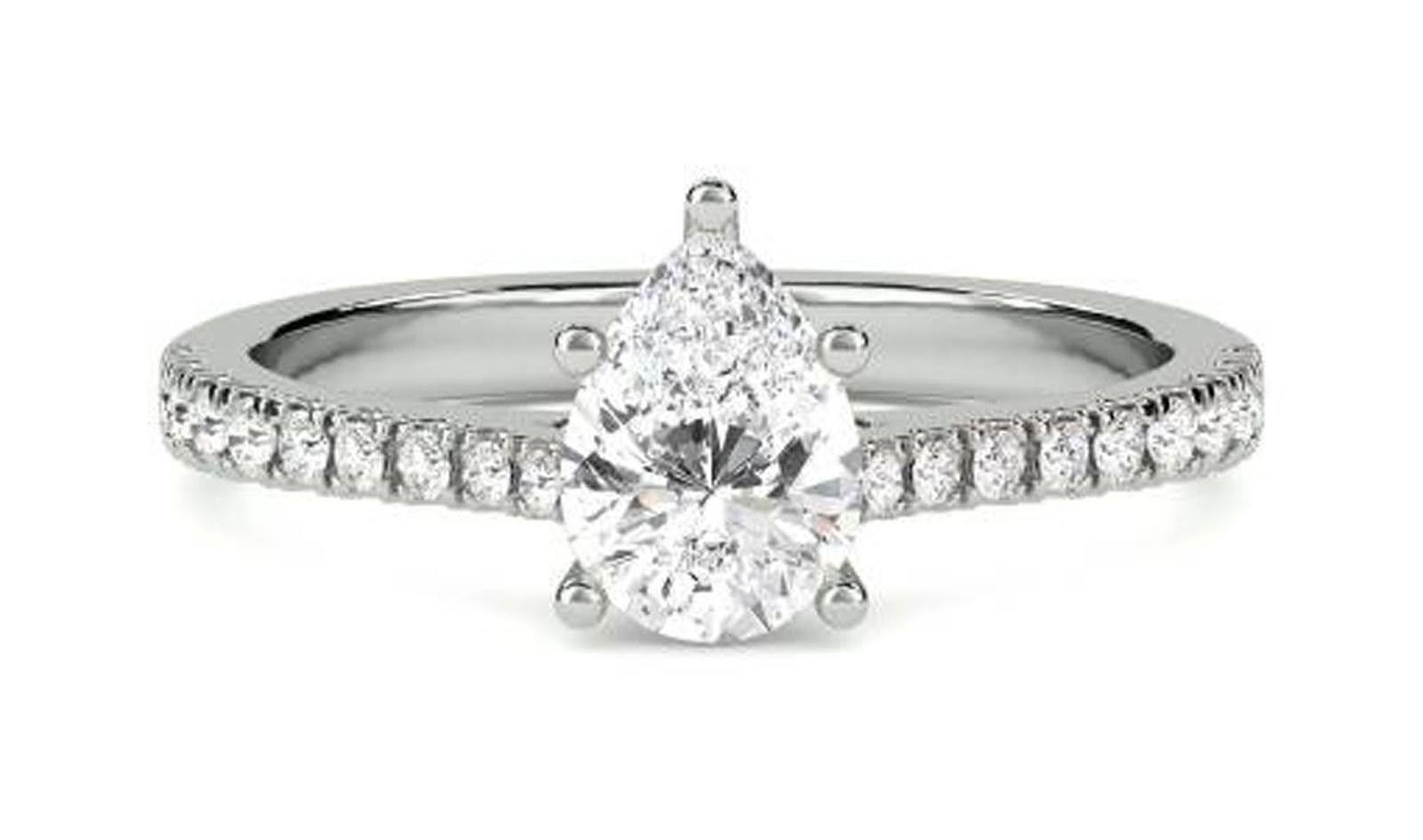
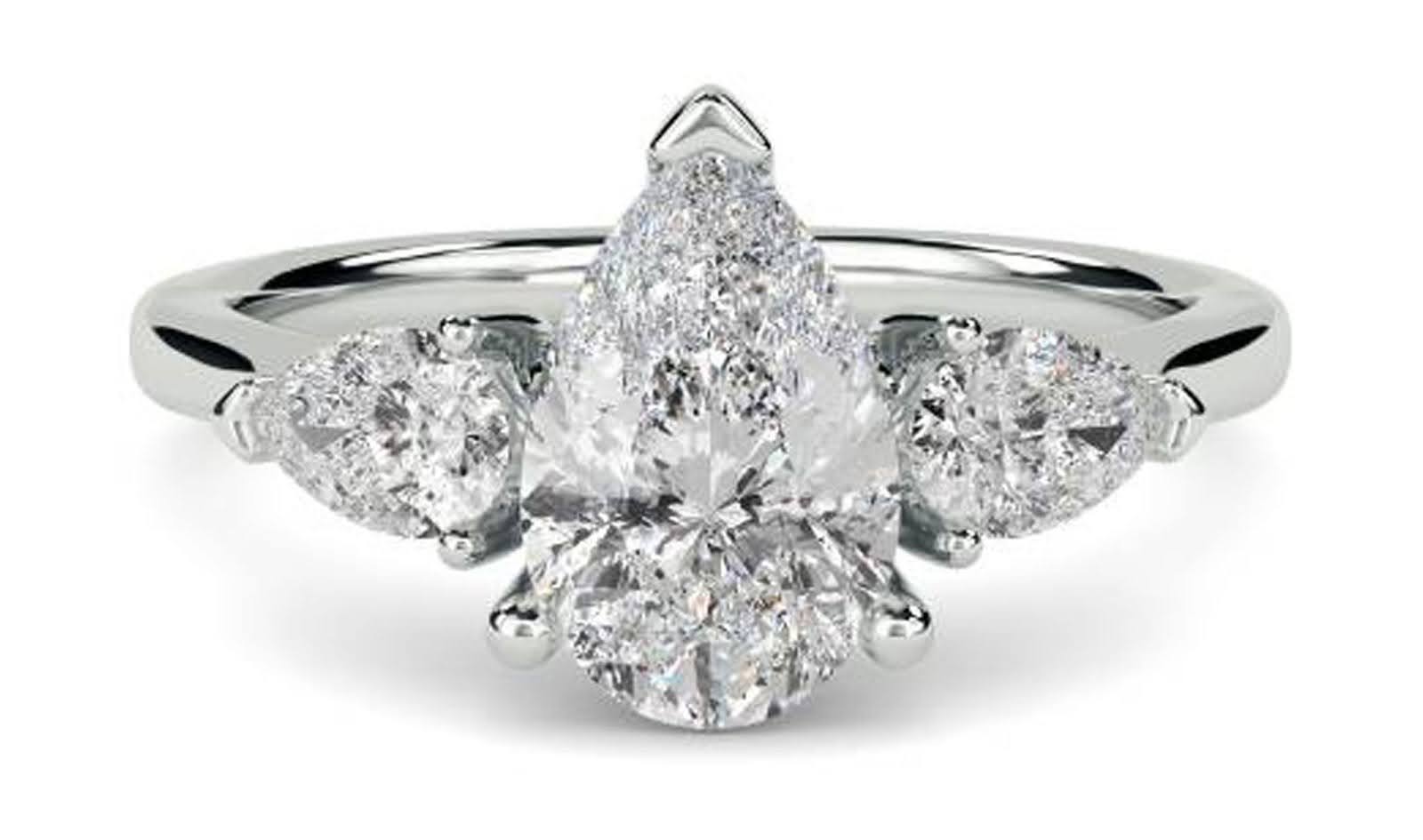
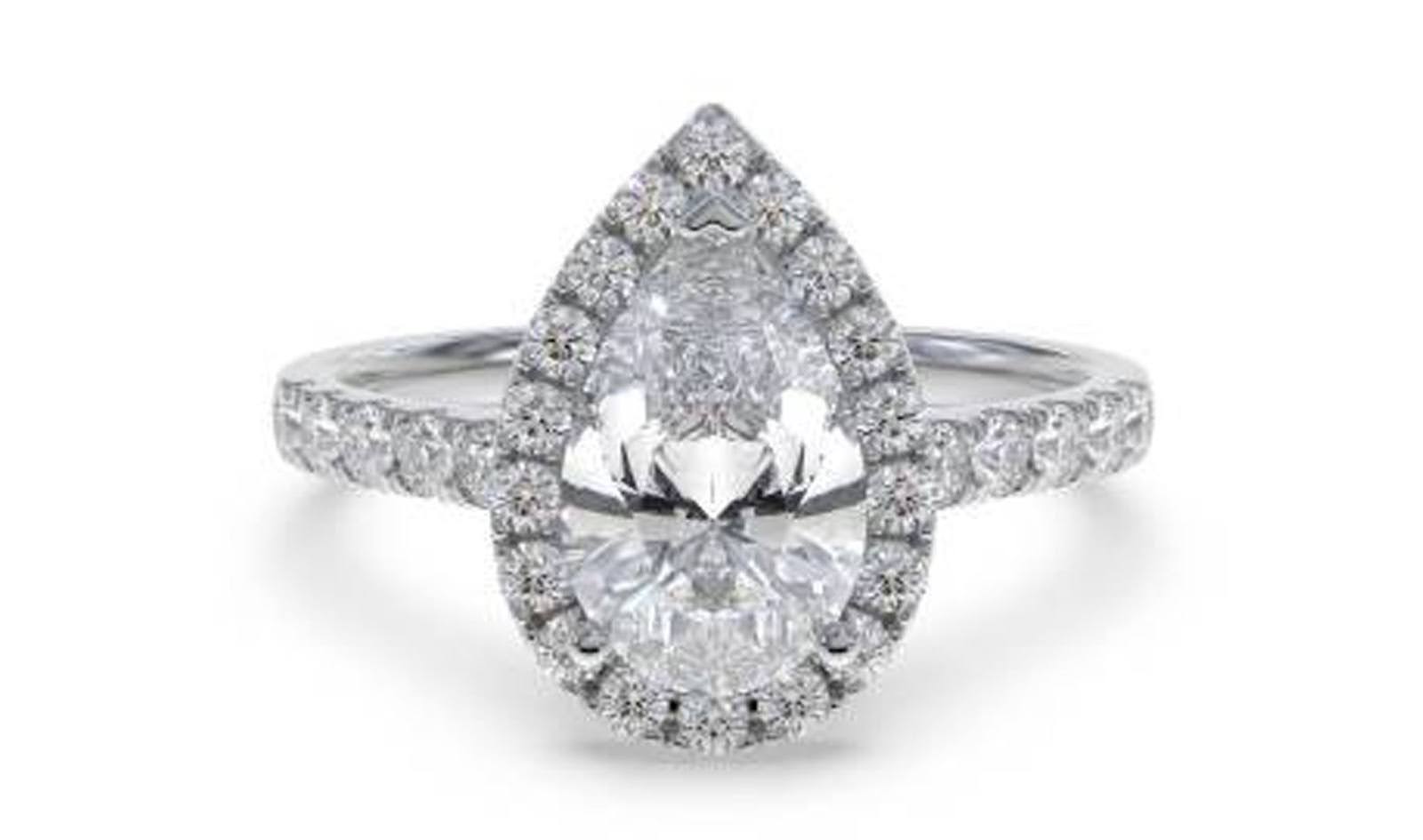
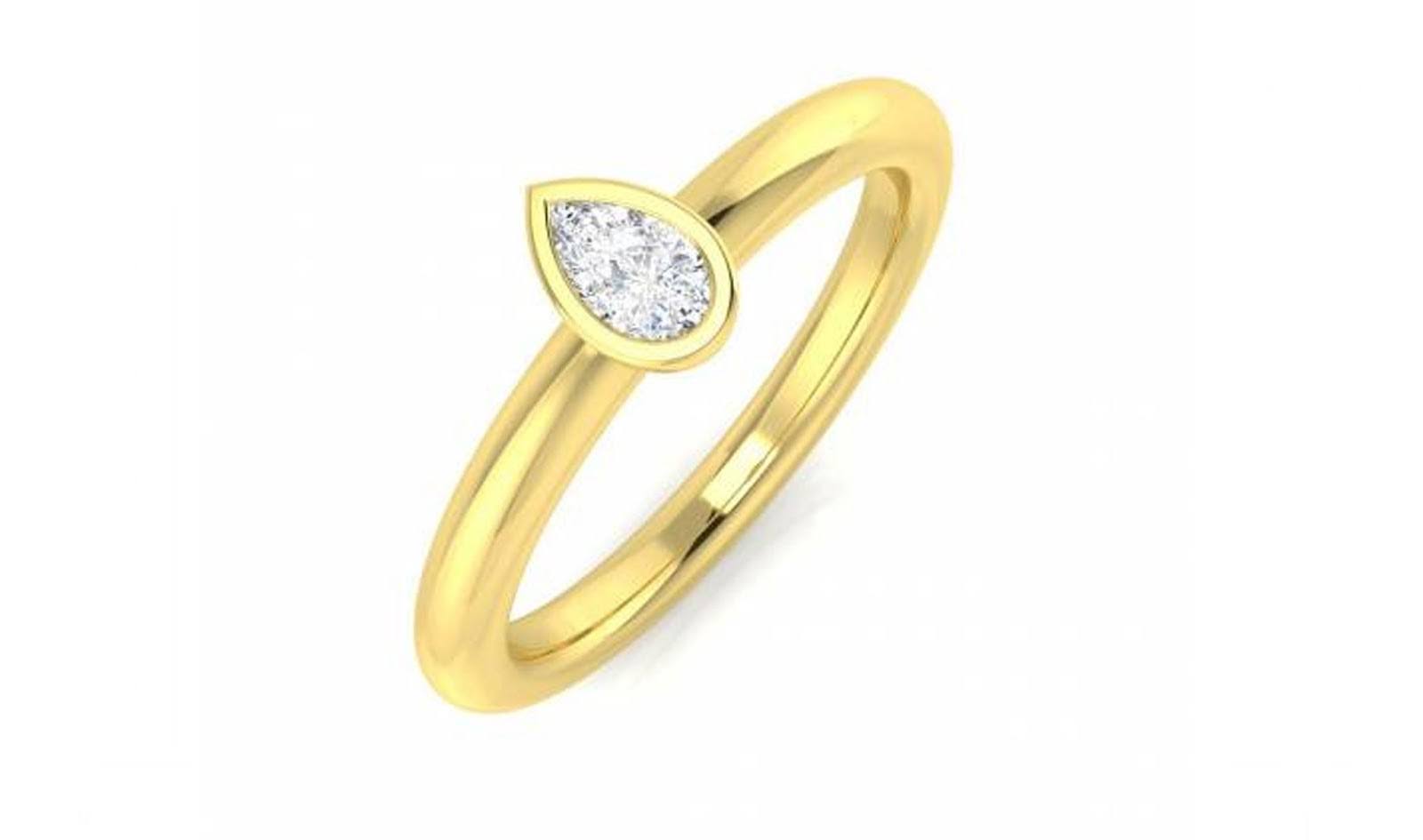
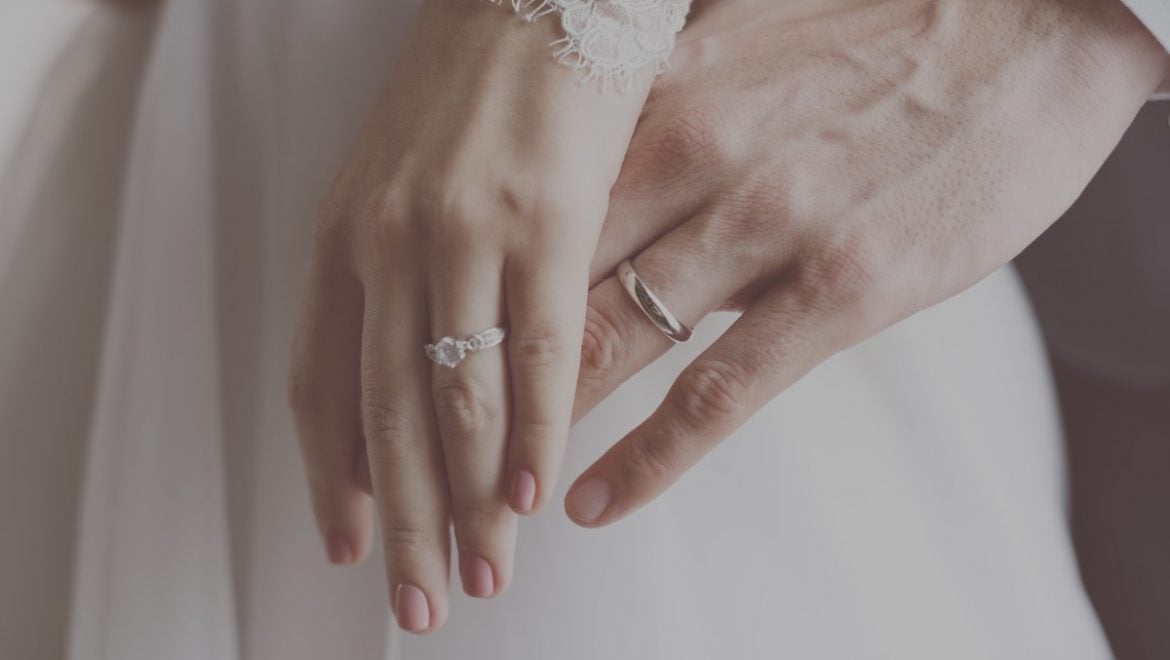 Do you wear your engagement ring on your wedding day?
Do you wear your engagement ring on your wedding day?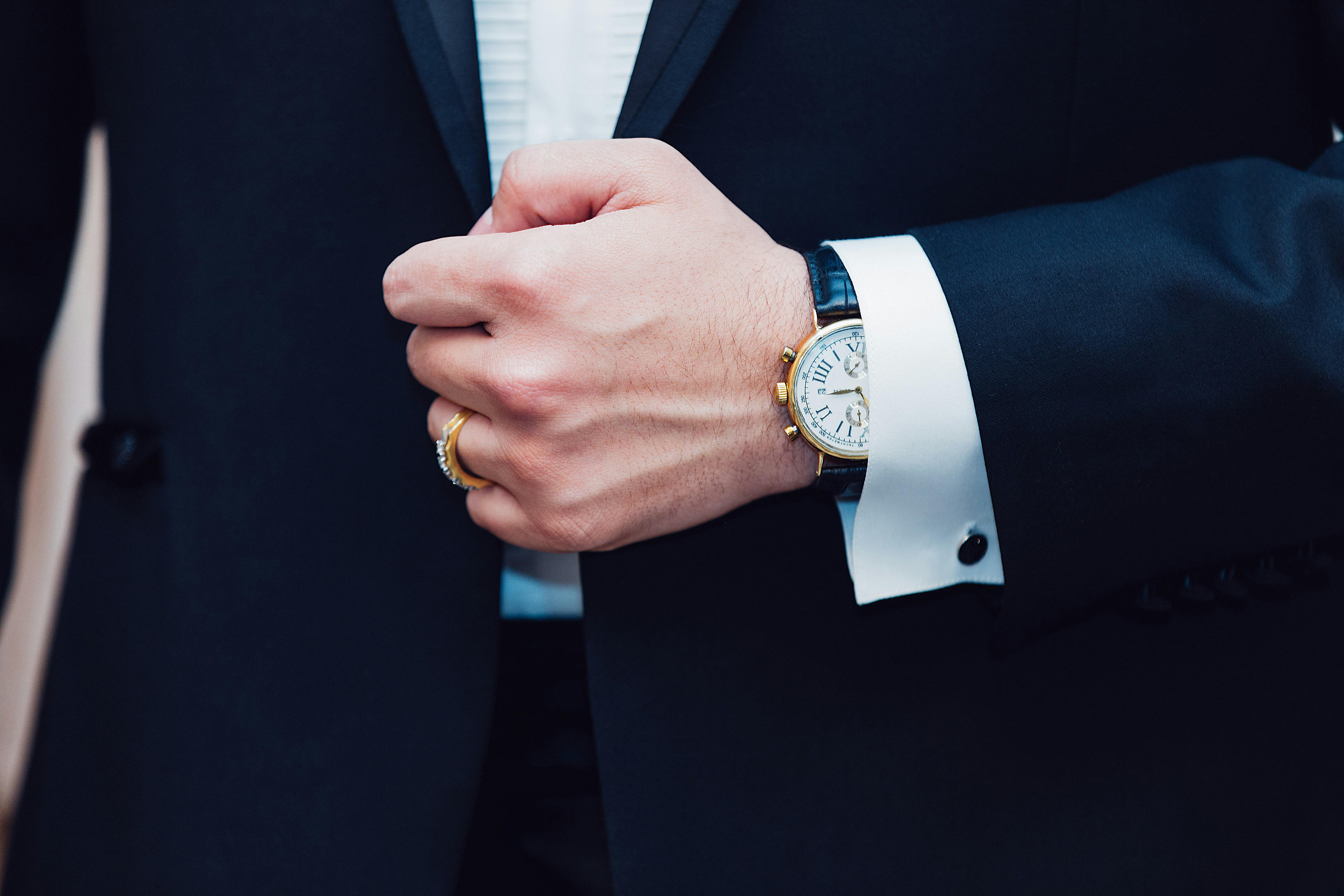 Stylish men’s engagement rings
Stylish men’s engagement rings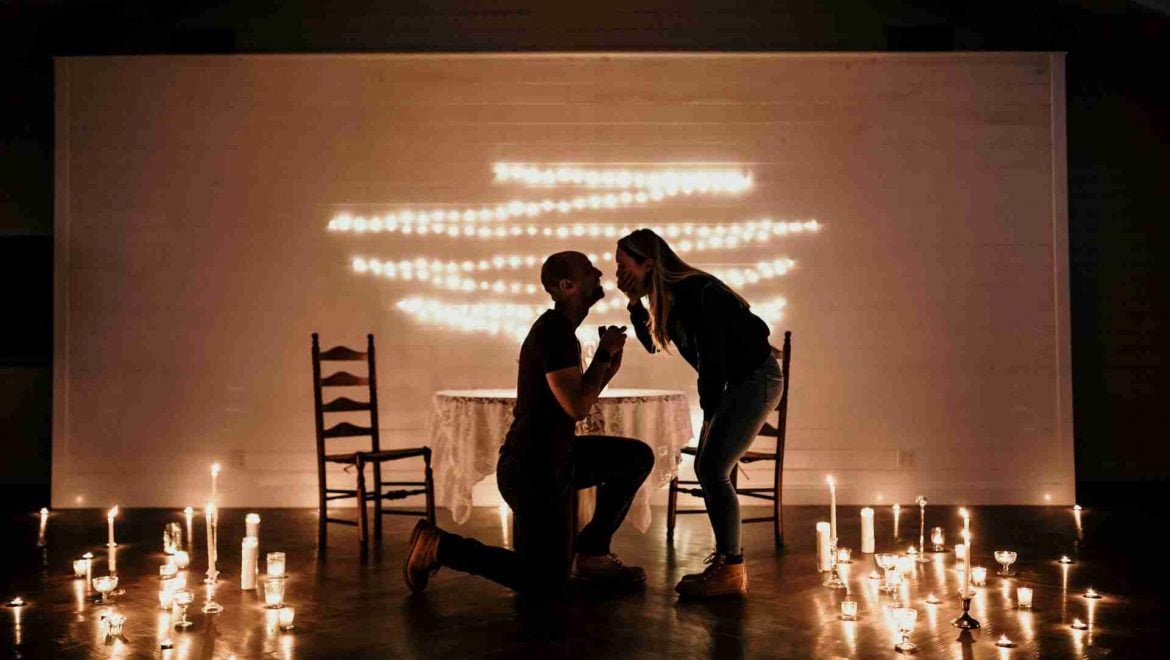 How to propose
How to propose